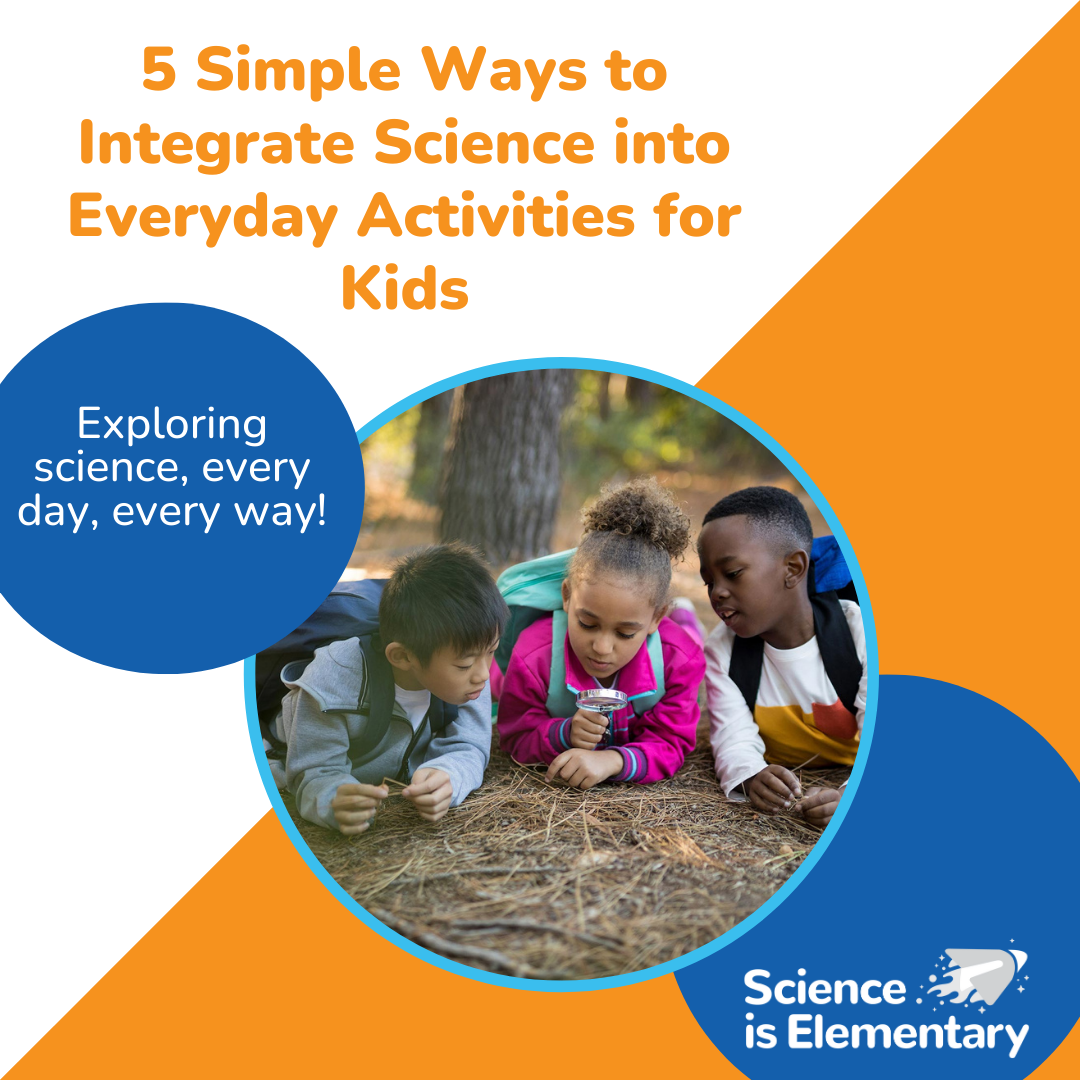5 Simple Ways to Integrate Science into Everyday Activities for Kids
Are you looking for creative ways to engage your children in science outside the classroom? You don't need fancy equipment or elaborate experiments to cultivate a love for science in your kids. At Science is Elementary, we strive to create young learners who appreciate the science behind even the most mundane activities. With a little creativity, everyday activities can become exciting opportunities for scientific exploration. Here are five simple ways parents can integrate science into everyday activities, making learning fun and accessible for children:
1. Chores Become Science Experiments: Turn mundane chores into exciting science experiments by exploring concepts like gravity, friction, and surface tension. For instance, while washing dishes, encourage your kids to observe how water molecules attract each other to form droplets. Ask questions like, "Why do some dishes dry faster than others?" or "How does soap break down grease?" This not only makes chores more engaging but also helps children understand scientific principles in real-life scenarios.
2. Culinary Adventures in the Kitchen: Cooking provides numerous opportunities to explore chemistry, biology, and physics. Invite your kids to join you in the kitchen and discuss concepts such as the chemical reactions that occur when baking bread or the emulsification process when making salad dressing. Let them measure ingredients, observe changes in food texture and color during cooking, and discuss the science behind each step. Cooking becomes a deliciously educational experience!
3. Nature Walks and Outdoor Exploration: Take advantage of outdoor activities to spark curiosity about the natural world. During nature walks, encourage your children to observe plants, insects, and animals in their habitats. Ask open-ended questions like, "Why do leaves change color in the fall?" or "How do ants communicate with each other?" Encourage exploration, collect specimens for observation, and engage in activities like leaf rubbings or building simple bird feeders. Nature becomes a fascinating classroom for hands-on learning.
4. Science-Based Playtime: Incorporate scientific concepts into playtime activities to make learning enjoyable and interactive. Experiment with simple toys like balloons, marbles, or building blocks to explore principles of physics. Create homemade slime to learn about polymers and non-Newtonian fluids. Encourage your children to ask questions, make predictions, and observe outcomes during play. By blending fun and learning, playtime becomes an opportunity for scientific discovery.
5. Observing the Night Sky: On clear nights, venture outside with your children to observe the stars, moon, and planets. Use simple stargazing apps to identify constellations and discuss celestial phenomena like phases of the moon or the movement of planets. Encourage questions about the universe and engage in discussions about space exploration and astronomy. Watching the night sky ignites curiosity about the vastness of the cosmos and our place within it.
Integrating science into everyday activities doesn't require elaborate planning or specialized knowledge. By incorporating simple yet engaging activities into daily routines, parents can nurture their children's natural curiosity and instill a lifelong love for learning. So, seize every opportunity to explore, experiment, and discover together with your little scientists!

